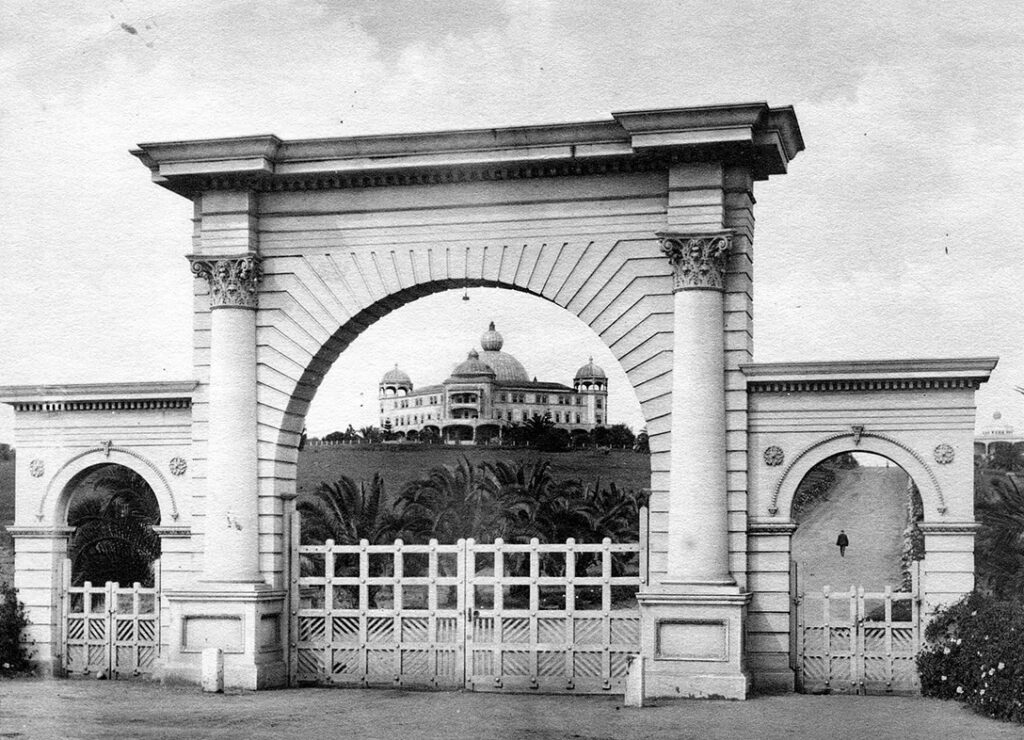The Theosophical Society’s motto is, “There is no religion higher than truth.” This group, which previously resided on our cliffside home of Point Loma Nazarene University, embodied these words as they sought “Truth, Light [and] Liberation for Discouraged Humanity” — words that were inscribed into our school’s cornerstone. And here we are, nearly 100 years later, still searching for the same truth and light.
Over a year ago, I began researching the truth behind PLNU’s history. Everything I had heard about my school’s history felt like convoluted rumors. I heard tall tales that the ghost of the theosophist Katherine Tingley resided in Cabrillo Hall. I heard that there were secret tunnels beneath campus. I kept hearing all these stories — again and again and again.
“We’re Sea Lions, but we have no idea what that means,” Izzy Tocci, a third-year biology major, said. “We need to tell these stories, whether they’re good or bad. God gave us a cool place to live, and we don’t know anything about it. Can something be important to us if we don’t fully know about it?”
Most schools take pride in their history, erecting statues and plaques to give students a peek into where they came from. Yet there’s a surprising lack of information on the Kumeyaay Tribe — the original inhabitants of San Diego County — and the Theosophical Society, which later came to Point Loma’s land.

During my first year at PLNU, my friends and I were up late one night wondering what our dorm hall was originally used for. We were curious about what happened to the people who came before us and who these buildings once housed.
On and on our questions went. Where did our history begin, and where are we going?
My friends and I want to honor our campus and the people who laid this foundation before us. Whether or not we fully agree with the people who came before us doesn’t matter — we just want to know the truth.
Jill Hall, a local San Diego author who grew up in Point Loma, said she also heard rumors about the Theosophical Society and this campus. There was, and still is, a kind of mystery surrounding this place.
But this campus has a history that is worth telling.
So it’s time to bring them into the light.
As I drove onto campus for the first time, my parents and I were greeted by rows of palm trees lining the entrance, giving way to this cliffside vista with an overwhelming ocean view. Everything felt so intentionally placed — designed to make room to hear from the divine.
“[Tingley] was all about nature, and everything had a purpose of where it was going to be,” Hall said. “The property was actually a desert when she moved there. So one of her main things was being able to live in nature. She grew up in Newburyport, MA, at a place called The Laurels, and that was in a forest of oaks and trees, and it overlooked the Merrimack River. So water was really spiritual to her and to other spiritual people.”
A history that is worth telling.
My parents and I parked at the admissions office and joined a tour group. Mieras Hall caught my eye as soon as we drove onto campus, and I was excited when the tour guide paused to tell us more about it. But even as she told us about how the Spalding family built Mieras, I felt like there was more to the story. According to Hall, there’s even more history lying inside its walls.
Reginald Machell was an artist and a devout theosophist who did the carvings inside Mieras Hall. According to Hall, his artwork centered on esoteric beliefs. These beliefs are what led to the architectural design of many of the Theosophical Society’s buildings on campus.
Mieras Hall, Cabrillo Hall and the Greek Amphitheatre are some of the only buildings that remain from the Theosophical Society’s time here. Their unique designs and the curvature of Mieras weren’t done purely for aesthetic reasons. They were built with sacred geometry in mind.
Rick Kennedy, PLNU professor of history and environmental studies, said that theosophists believed that squares and rectangles were bad, giving them the “mystical idea” that their architecture needed to be octagonal and circular. According to the Australian branch of the Theosophical Society, “The circle itself is an ancient symbol of eternity and represents the Absolute, the unmanifested universe containing the potentials of all form.”
Dwayne Little, PLNU professor emeritus of history, wanted to pay homage to these symbols when PLNU’s Brown Chapel was being designed. Hall said Little wanted to honor the Temple of Peace and the Homestead that previously occupied the space where Brown Chapel is located today.
And Mieras Hall? Little wanted to honor the Theosophical Society with that building as well. There used to be a large dome on top of the building, which has since been replaced with a smaller sphere — a tribute to a Point Loma of the past.
My tour of PLNU led us down Caf Lane and around the Greek Amphitheatre, giving us a panoramic view of the soccer field and Klassen and Hendricks Hall in the distance. The further we went, the more Point Loma’s history engulfed us. The tour guide never mentioned it, but lying within this part of campus were more stories to be told. More mysteries to be uncovered.
“This used to be [United States International University],” Jeff Bolster, PLNU vice president of university services, said. “In the ‘50s and ‘60s, it was USIU. We bought the campus from [them], so it was their dorms.”
In Bolster’s office, there’s a framed photo of the Theosophical Society’s blueprints from 1922. It’s all there — the Temple of Peace, the academy, a cottage, a carpentry shop and even a plant store. This campus looks different from how it did 100 years ago, but buried deep within this campus are stories worth telling.
Will we tell them?
My tour guide never talked about the Theosophical Society or even USIU. I hardly even heard the story of PLNU’s move from Pasadena.
But these stories are worth telling.
There is no future without a past. As we look ahead to what’s in store for PLNU’s future, I hope we find space to honor those who have come before us.
Bolster said that PLNU hopes to add more parking, dorms and a fitness center. The Campus Master Plan offers a glimpse into what the next few years will hold for PLNU.
But glimmers of the past remain.
Hall hopes to host a launch party for her upcoming book, “On A Sundown Sea,” a novel about Tingley and the origins of Lomaland. The Theosophical Society buildings remain on campus, preserved by the city of San Diego.
Perhaps the little town of Point Loma is the place where the past and the future can hold hands as we overlook the sea, the utopia on the cliffs. We have stories that are worth telling.
